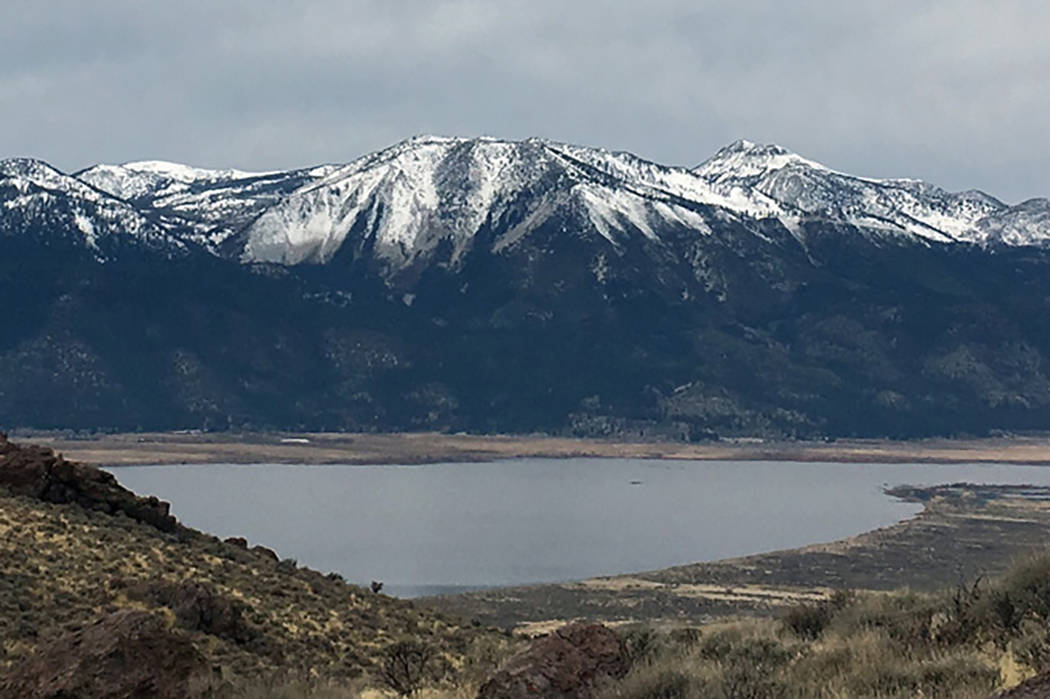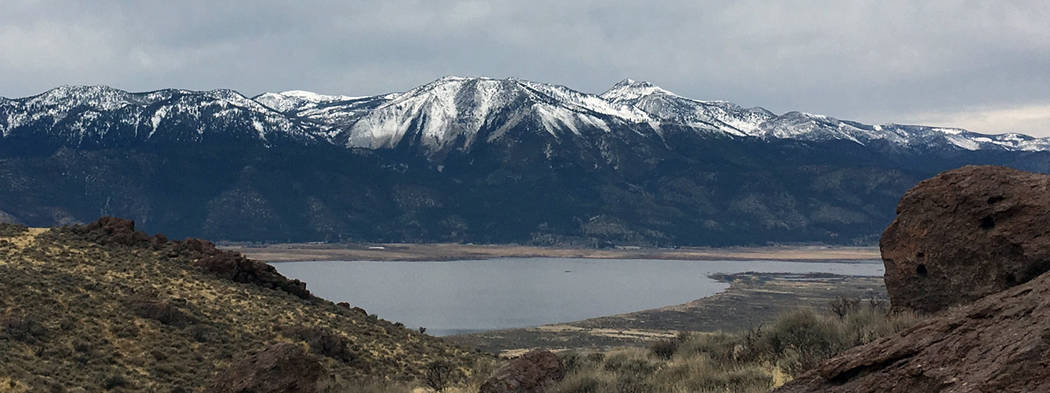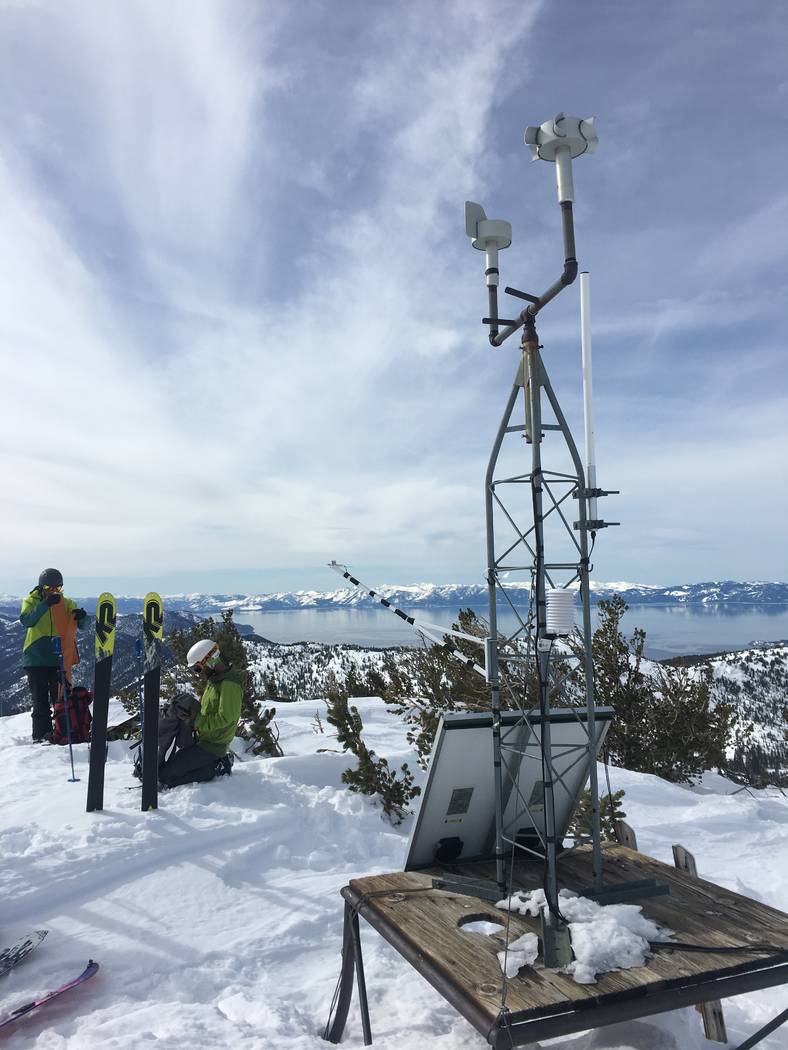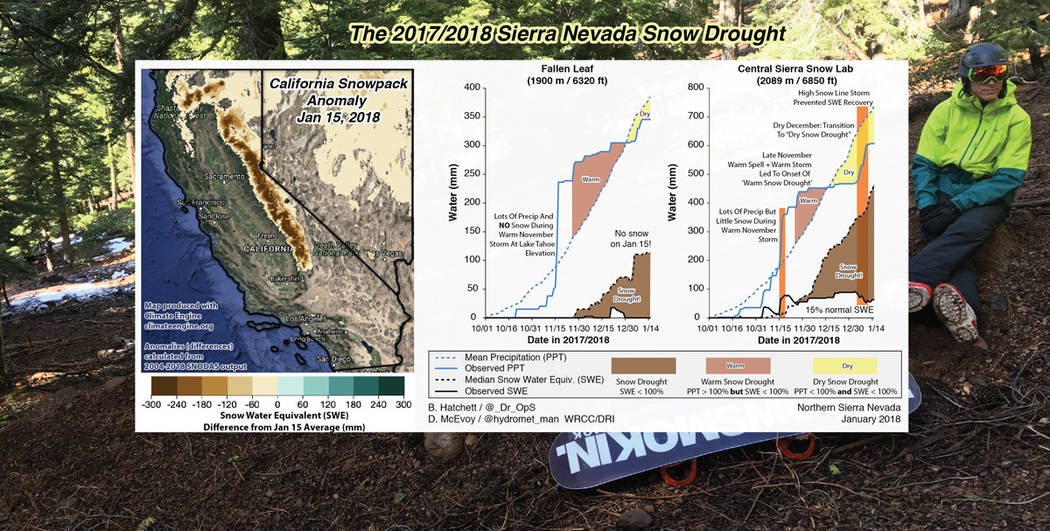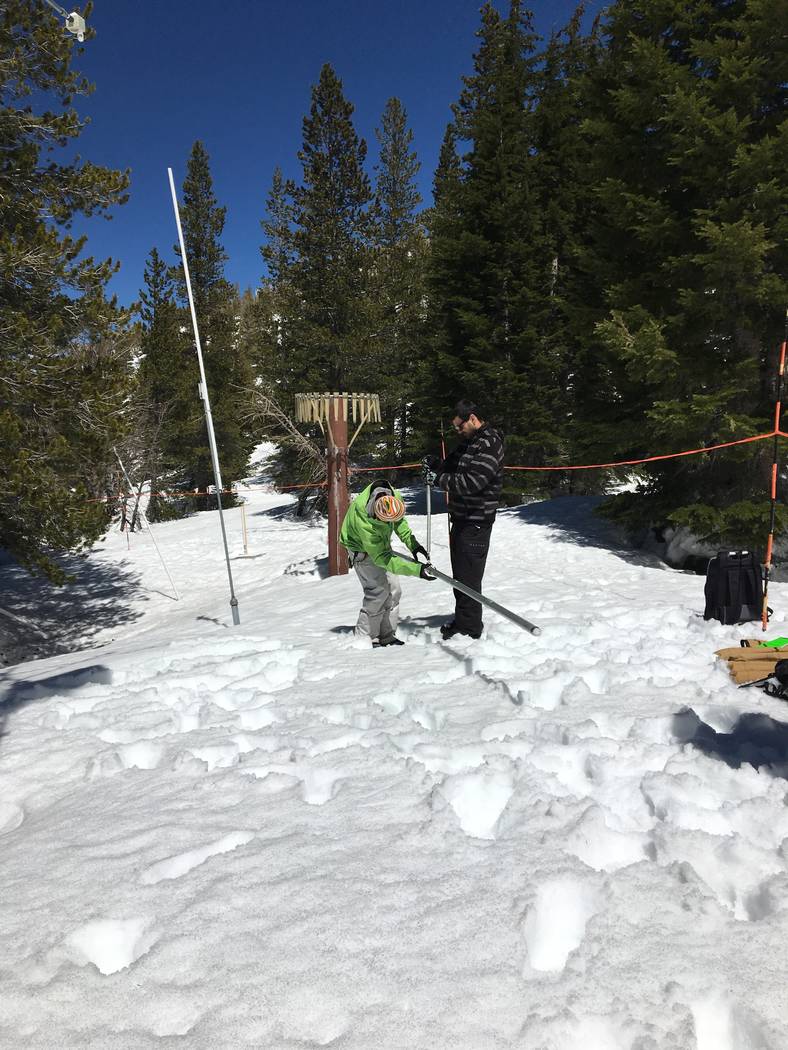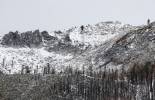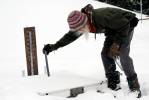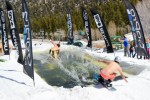Nevada researchers warn of more ‘snow droughts,’ even in wet years
There’s a term for what’s going on right now in the Sierra Nevada and the mountains that feed the Colorado River. It’s called a “snow drought,” and Nevada climate scientists warn that Westerners had better get used to the phenomenon.
Periods of below-average snowpack have become increasingly common in some Western mountain ranges, and more frequent snow droughts are likely as global temperatures continue to rise, according to Benjamin Hatchett, a postdoctoral fellow in meteorology and climatology at the Desert Research Institute in Reno.
“We’re kind of seeing all these things coming together, and not just in California but all over the West,” he said.
Hatchett and fellow DRI climate researcher Daniel McEvoy are studying trends and changes to mountain snowpack and their impact on regional watersheds and the economies in places where winter recreation fuels tourism. They hope their research will help water managers and others plan for a future that is likely to involve longer dry spells, changes in runoff patterns and an increased risk of flooding.
A drought that’s wet
In a paper published recently in the journal Earth Interactions, they used hourly, daily and monthly data to analyze the progression of eight historic snow droughts that occurred in the northern Sierra Nevada between 1951 and 2017. What they found were two distinct types of snow drought: the familiar “dry” variety caused by low levels of precipitation and a “wet” drought that results when mountain areas usually blanketed with snow get rain instead.
Hatchett said the most recent drought in the Sierra was “pretty similiar” to previous dry spells in terms of precipitation, “but it was this increase in temperature that really exacerbated the severity.”
“As the climate grows warmer and more precipitation falls as rain instead of snow, we are seeing that we can have an average or above-average precipitation year and still have a well-below-average snowpack,” said Hatchett, who has noticed the difference firsthand over a lifetime of backcountry skiing.
In November, he published research outlining a 1,200-foot rise in the average snow level — the elevation at which rain turns to snow — in the Northern Sierra over the past 10 years. Over that same period, the region was experiencing its warmest decade on record, he said.
Snowpack is crucial even in communities that rarely see any snow. The Las Vegas Valley draws 90 percent of its water supply from Lake Mead, and nearly all of that water comes from snowmelt in the mountains that feed the Colorado River.
Hatchett said the Colorado is more susceptible to the dry form of snow drought because the mountains that feed the critical watershed are higher and farther inland. The river also benefits from having “a bigger catcher’s mitt” of mountain ranges feeding into it, so it might be dry in some areas but wet in others, he said.
A dam emergency
But Hatchett said warming temperatures also can lead to an increase in so-called “rain-on-snow events,” in which powerful and unseasonably warm rainstorms cause the snowpack to melt all at once. Suddenly, “water is moving through the system very quickly and has to be dealt with as a hazard, not a resource,” he said.
Just last year, almost 190,000 California residents had to be evacuated when the spillways failed at Oroville Dam during the region’s wettest winter in 100 years.
With more variability and volatility likely on the way, Hatchett said, “we need to step up our infrastructure maintenance.”
We also need to prepare for lean times that could last far longer than we’re used to, he said.
Hatchett helped author another paper — recently accepted for publication but not yet published — that suggests the past century or so was actually one of wettest periods in the last 4,000 years in the mountains that feed water into Walker Lake, 325 miles northwest of Las Vegas.
Previous centuries have been marked by so-called “paleo mega-droughts” that stretched on for decades, he said, but no one living in the West since 1880 has experienced anything like that, at least not yet.
“Our goal is to provide actionable science to inform adaptive water management strategies,” Hatchett said.
Contact Henry Brean at hbrean@reviewjournal.com or 702-383-0350. Follow @RefriedBrean on Twitter.
On the web
The study by climate scientists Benjamin Hatchett and Daniel McEvoy from the Desert Research Institute is called "Exploring the Origins of Snow Droughts in the Northern Sierra Nevada, California."
A full version is available online from the American Meteorological Society at http://journals.ametsoc.org/doi/10.1175/EI-D-17-0027.1.



